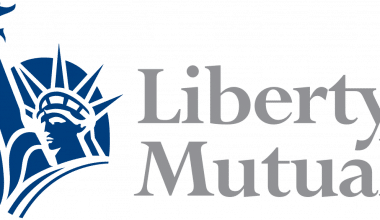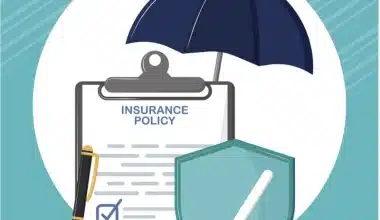Without the right type of esthetician insurance, your business could face serious liability and financial consequences.
If you’re an esthetician, liability insurance is essential to protecting your business. Estheticians perform procedures that can sometimes produce unwanted results, and one lawsuit from an angry customer has the potential to destroy your career and leave you broke if you’re uninsured.
Whether you’re a medical esthetician, skin care specialist, waxing professional, or spa worker, you’ll need a policy that includes at least professional liability coverage and general liability coverage.
What is Esthetician Insurance?
Esthetician insurance is a policy that has several types of small business insurance tailored to meet the risks that come with the profession. Running a beauty business presents plenty of unforeseen challenges.
Consider these two scenarios: An allergic reaction leads to a facial client’s discomfort and potential liability claims, or an employee gets hurt while providing a pedicure. If a client suffers an adverse reaction to treatment and sues your business, the general liability portion of your esthetician insurance would cover your legal costs.
What does Esthetician insurance cover?
Esthetician insurance includes several types of small business insurance that cover a wide range of problems, such as accidents, lawsuits, stolen inventory, damaged tools, and lost income.
A good place to start is with a business owner’s policy (BOP). A BOP establishes a strong coverage foundation by combining three essential coverages, and it’s usually cheaper than buying each coverage type separately.
Here are the three types of coverage included in a BOP. You can add extra coverage on top of a BOP to customize it for your own business risks.
Business liability insurance
This is the foundation for your esthetician insurance policy. It covers accidental injuries and property damage to others, as well as coverage for problems such as advertising injury, copyright infringement, and reputational harm.
For example, if a client slipped on a wet spot in your spa, the general liability portion of your policy would cover their medical bills.
Commercial property insurance
Commercial property insurance covers the physical location of your esthetician business and your business equipment, like your tools and inventory. It covers problems such as fires, storms, theft and vandalism.
Business interruption insurance
If you have to temporarily close your esthetician business due to a problem covered by your policy (like theft or fire), business interruption insurance covers your lost income. This coverage type is also known as “business income insurance.”
Other types of small business insurance
A BOP is a great start to your esthetician insurance plan, but you’re going to need to augment your policy with additional coverage types.
Here are several types of coverage you might want to consider incorporating into your policy.
Commercial umbrella insurance
Commercial umbrella insurance is an extra layer of protection on top of your general liability insurance. For example, if your esthetician gets sued for $800,000 and your general liability limit is $500,000, umbrella insurance would cover the $300,000 shortfall.
Errors and Omissions insurance
Errors and omissions insurance (E&O) covers your esthetician business for claims of professional mistakes and services, even if the claims have no merit. For example, if your esthetician business gets sued because your treatment plan fails to deliver promised results, your E&O coverage would pay for your legal costs.
Errors and omissions is also called professional liability insurance.
Commercial auto insurance
If you use a vehicle for your esthetician business, you’re going to need a commercial auto insurance policy. Your personal car insurance policy won’t cover work-related accidents.
Like a BOP, a commercial auto policy combines several coverages into one policy. Here are some of the types of coverages you can expect to see:
- Bodily injury liability. This covers accidental injuries to others that you or your employees cause.
- Property damage liability. This protects your business against accidental damage caused to other people’s property by you or your employees.
- Combined single limit (CSL). This coverage uses only one limit for claims involving injuries and damage to property, making it simpler than having separate limits.
- Medical payments and personal injury protection (PIP). When you or your passengers suffer injuries in an accident, this covers medical expenses, regardless of who was responsible for the accident.
- Collision insurance. This policy covers repairing or replacing your vehicle if you or your employees are involved in a car accident.
- Comprehensive insurance. This type of coverage handles repair or replacement expenses for your vehicle due to events like theft, vandalism, fires or floods.
- Uninsured motorist (UM)/underinsured motorist (UIM) coverage. If someone without car insurance or not enough car insurance crashes into you, this pays for you and your passengers’ medical bills. In some states, you can add UM to pay for damage to your vehicle caused by an uninsured driver.
Hired and non-owned auto insurance
When you or your employees use a personally owned or rented vehicle for business, this insurance covers injuries and property damage accidentally caused to others. For instance, if your employee drives a rented car to haul supplies from one salon to another and crashes into someone’s pickup truck, this coverage could kick in.
Workers’ compensation insurance
Workers compensation insurance is required in most states, even if your esthetician business has only one employee. If your employees get sick or hurt while performing job-related duties, workers comp covers expenses such as lost wages, medical care, and physical therapy.
How much does Esthetician Insurance cost?
Esthetician insurance costs less than $70 per month for a business owner’s policy, according to Insureon. Nearly a third (30%) of beauty and personal care professionals pay less than $50 per month and about half (46%) pay between $50 and $100 per month.
Your esthetician insurance costs will vary depending on cost factors such as:
- The types of coverage you buy.
- Types of services provided.
- Kinds of business equipment and property.
- Revenue.
- Geographical location.
- Employee count.
- Claim history.
Best Esthetician Insurance providers
Next Insurance – Best for policy management
Next Insurance offers general liability, professional liability, commercial auto, workers compensation, and commercial property insurance to estheticians in a customizable package with premiums starting as low as $134 per year. Monthly billing options are available.
Next is a great choice for estheticians who prefer to transact online, with a highly rated mobile app and online portal you can use to manage your policy, file a claim, and share your digital certificate of insurance with anyone. There’s even a live chat feature with a U.S.-based support team.
Next offers three tiers of coverage: Pro Plus, Pro, and Basic. Each tier covers commercial auto, general liability, workers’ compensation, and commercial property insurance, but has different coverage limits, depending on the tier. For example, the Pro Plus tier has the following limits:
- General liability: $1 million per occurrence/$2 million aggregate
- Workers’ comp: $1 million/per incident
- Commercial property: $25,000/per occurrence1Next. “Esthetician Insurance.”
One downside is that professional liability coverage is claims-made, but general liability coverage is occurrence form. So if a lawsuit is brought against you after your policy expires, you may or may not be covered, depending on the type of lawsuit.
The Hartford – Best for comprehensive coverage
The Hartford is ideal for estheticians who want to create a fully customized, comprehensive policy, particularly businesses that have employees. You can get a business owner’s policy, which includes general liability, commercial property, and business income insurance, and add professional liability and product liability coverage to cover a wide range of incidents. You can also get workers’ compensation insurance if you have employees.
Coverage isn’t mobile—you’ll need to specify where you work to get a quote—but you can get a policy that covers you if you travel to clients’ homes. The available limits also vary based on your location and revenue. For example, we found coverage available up to $2 million per occurrence and up to $4 million per year in one location, but up to $2 million per occurrence and up to $3 million per year in another.
The Hartford offers both claims-made and occurrence-form policies, depending on the type of coverage. The company also gets high marks for financial strength and customer satisfaction, with an A+ (Superior) financial strength rating from AM Best and very few complaints with the NAIC.
ASCP: Best for high coverage limits
A membership to Associated Skin Care Professionals (ASCP) includes professional, general, and product liability coverage as well as educational and marketing resources useful for advancing estheticians’ careers. The policy covers up to $2 million per occurrence and up to $6 million per member per year, one of the highest coverage limits we’ve seen.
What’s more, ASCP will also cover any legal fees that go above and beyond those limits. The policy costs $259, and you can add $10,000 in business personal property insurance for an additional $95. The company also offers coverage for advanced esthetic services, such as LPL and CoolSculpting.
ASCP policies are underwritten by Allied Professionals Insurance Company, which has an A- (Excellent) financial strength rating with AM Best.7 That’s the lowest grade we typically recommend, but AM Best predicts a positive outlook for the company. The company also had only one complaint with the NAIC over the last three years for professional liability insurance.8
Reviews about the company on third-party sites are positive as well. ASCP provides occurrence form coverage, so you can remain protected for incidents that occurred while your policy was in effect, even after your policy expires.
NACAMS – Best for occurrence-based claims
Policies offered by the National Association of Complementary and Alternative Medicines (NACAMS) are underwritten by Arch Specialty Insurance Company, which has an A+ (Superior) financial strength rating with AM Best and far fewer complaints with the National Association of Insurance Commissioners (NAIC) than expected given its size.
Additionally, customers rave about the service NACAMS provides policyholders on third-party review sites. NACAMS offers occurrence form coverage, which means you’ll be covered if the incident occurred while the policy was active, even if you file a claim after the policy expired. However, bear in mind that when your policy expires, so does your coverage in many cases.
Though NACAMS does not offer business personal property insurance, estheticians who rent their facilities and equipment will be protected with up to $100,000 in coverage if the rental space is damaged and up to $1,000 in coverage for stolen, damaged, or lost rental equipment. An identity protection plan is also included.
Plus, you’ll get bonus perks, like discounts on business supplies and a free professional website. Policies are affordable compared to other companies, and monthly billing options are available, as is pricing for students.
Beauty & Bodywork Insurance – Best for the cheapest coverage
Beauty & Bodywork Insurance offers the cheapest premiums of the companies we reviewed. Students pay $67 annually while professionals pay $96 annually. For that low price, you get up to $2 million in coverage per occurrence, $3 million aggregate for general and professional liability claims, and $3 million aggregate for product liability claims.
Personal and advertising injury coverage is also included, as is $300,000 in rental damage coverage. You can also add an additional insured for $15. The drawback to the policy is that it’s claims-made, so you’ll only be covered for claims made while the policy is in effect.
Beauty & Bodywork Insurance policies are underwritten by Great American Insurance Company, which has an A+ (Superior) financial strength rating with AM Best and far fewer complaints with the NAIC than expected given its size.
Beauty & Bodywork Insurance also has excellent customer service reviews on third-party websites. However, the company offers fewer coverage options than insurers like Next or The Hartford.
What does Esthetician insurance not cover?
Esthetician insurance policies do not cover every unforeseen incident. Here are several common exclusions:
- Deliberate or fraudulent acts.
- Earthquakes (you’ll need to buy a separate earthquake insurance policy).
- Floods and earthquakes (you’ll need to buy a separate flood insurance policy).
- Government confiscations.
- Infectious diseases.
- Radioactive fallout
- War.
- Wrongful dismissal (unless you have employment practices liability insurance).
Where to get Esthetician Insurance
To put together an esthetician insurance policy, you’ll need a good mix of coverage types to meet your industry’s risks. Small business insurance companies include:
- Acuity
- Allstate
- American Family
- Auto-Owners Insurance
- biBERK (Berkshire Hathaway)
- Chubb
- Frankenmuth Insurance
- Hiscox
- Nationwide
- Next Insurance
- Progressive
- State Farm
- The Hanover
- The Hartford
- Travelers
Ways to save on Esthetician Insurance
Here are six things you can do to lower your costs for esthetician insurance.
- Compare business insurance quotes. While many insurance companies use similar factors to set rates, each has its own way of calculating them. That’s why it’s important to compare several business insurance quotes to find a good price.
- Bundle your policies. Combining coverage types can help you save money—for instance, a BOP bundles general liability, commercial property and business income insurance. Buying a BOP can be cheaper than buying three separate policies.
- Increase your deductible. Your insurance deductible is the amount that’s subtracted from your claims check. You can save on your business insurance premium by selecting a higher deductible.
- Verify worker categorization. Creating detailed job descriptions for your staff and having them only perform duties within their classification can help you save on workers compensation insurance. You can speak with your insurance agent if you’re not sure how to classify your workers.
- Create a safety program. You could qualify for savings if you create, document and implement a safety program.
- Pay your premium in full. You might be eligible for a discount by paying your entire premium upfront instead of every month.
Recommended Articles
- Business Insurance Quotes: Getting Insurance Quote Online
- Small Business Liability Insurance: How Does It Work?
- Business Owner Policy: What It Is & What It Covers
- Best Cheap General Liability Insurance Providers 2023
- Cleaning Business Insurance and Bonding: Finest Options
- Accountant Professional Liability Insurance: Coverage, Cost & More






